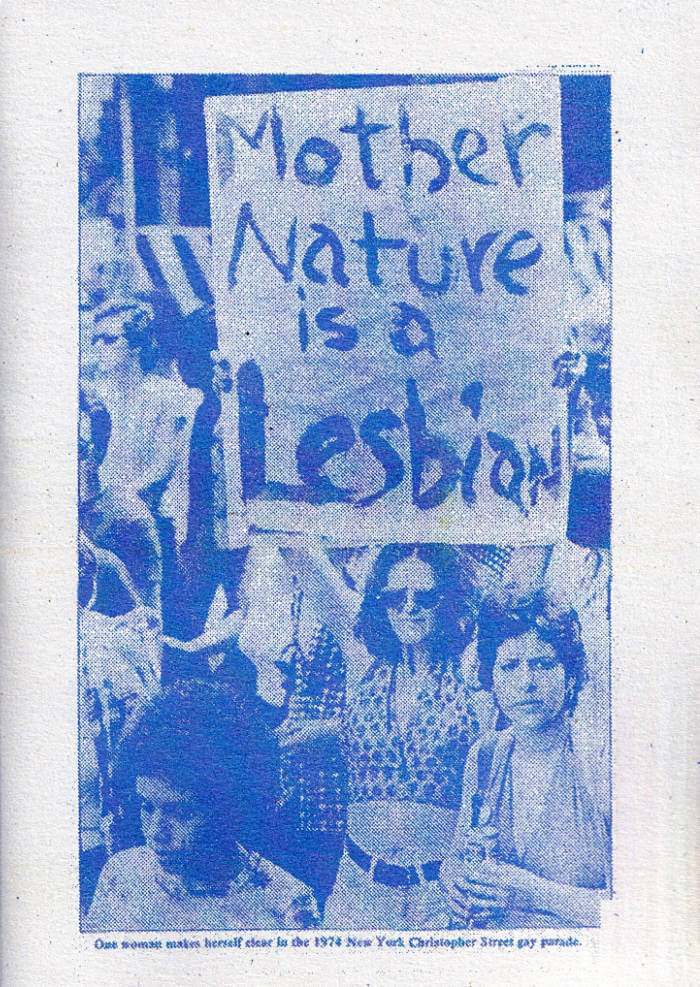Artists' Books
Artists' Books

Cyberpositive
0(rphan)d(rift>)'s Cyberpositive is an experimental sci fi theory-fiction that streams a group of asked and unasked contributors writing, sampled and edited by 0D's Maggie Roberts. It was published in 1995 with support from Nick Land and Cabinet Editions, serving as a manifesto and as the catalogue for the debut exhibition of the same name. It came together in the spirit of much of 0D's visual work, bringing together processes of sampling and looping as well as the Burroughs text cut up technique, referring to a breakdown and reordering of language from a post human POV.
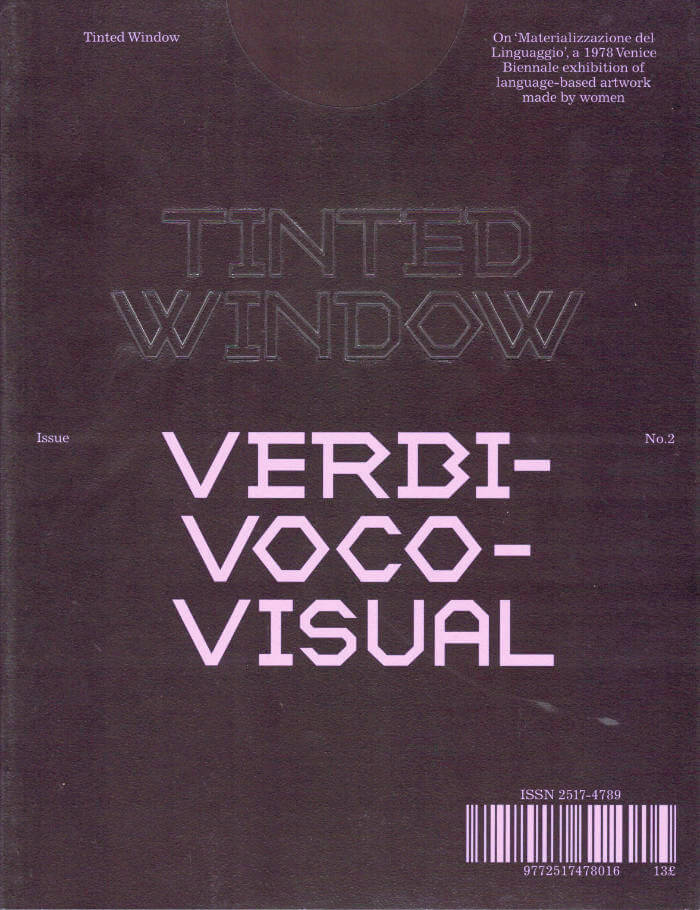
Tinted Window #2 : Verbivocovisual
This issue is dedicated to 'Materializzazione del Linguaggio', a 1978 Venice Biennale exhibition curated by Mirella Bentivoglio. The exhibition comprised of work by over eighty women artists working in a huge range of media, but united in their interrogation of text, voice and language. After the smashing hit of their Hervé Guibert No.1 issue, Tinted Window continues its focus on a single subject with issue No.2: Verbivocovisual. In No.2, Tinted Window brings much of this work back to the fore where many artists have slipped into the footnotes of an exciting period in art history. But much beyond our focus on this iconic exhibition, the issue features new essays and art projects by some of the best artists working with text, voice and poetry today.
No.2 features new commissions, translations and reprints from: Holly Antrum, Jeremy Atherton Lin, Mirella Bentivoglio, Angela Bianchini, Daniela Cascella, Anne Carson, Paula Claire, Paul Clinton, William Cobbing, Constance DeJong, Karen Di Franco, Sholto Dobie, Gustavo Grandal Montero, Katalin Ladik, Daisy Lafarge, Rosanna Mclaughlin, Silvia Mejía, Hannah Regal, Giovanna Sandri and Sue Tompkins.
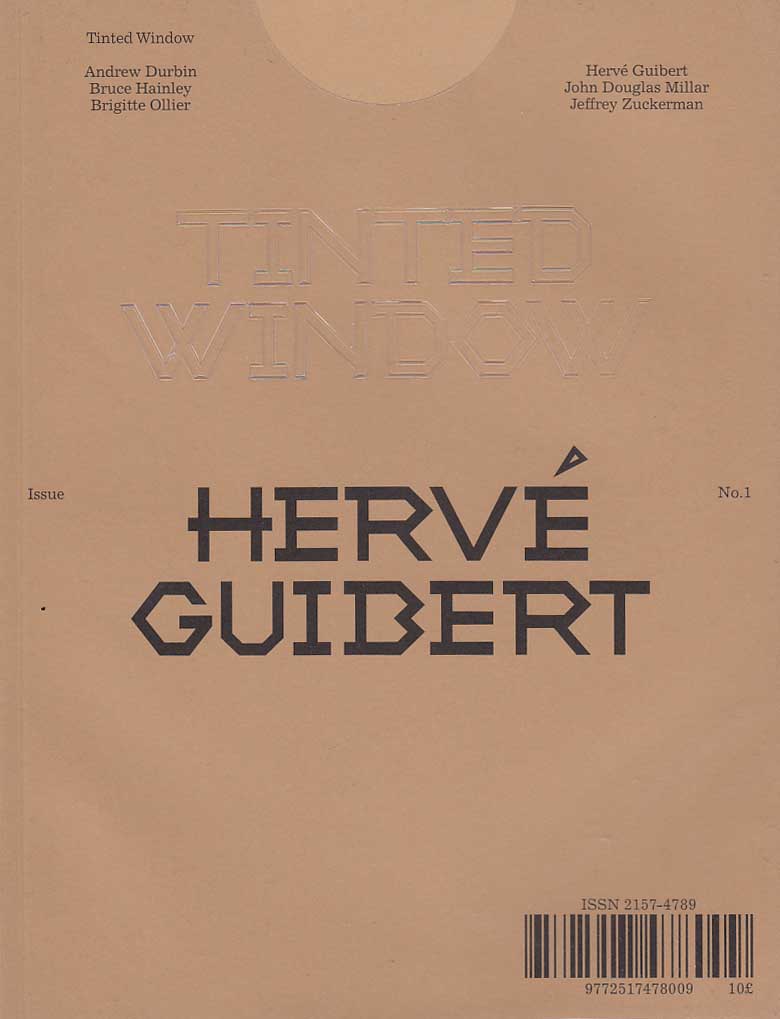
Tinted Window #1 : Hervé Guibert
No.1 explores the life and work of the writer, photographer and filmmaker Hervé Guibert. There is a travelogue to Greece in search of a portrait; reminiscences from those that knew him well or otherwise; first-time English translations of his work; a fine eye for his photographs; writing that deftly traces his last moments. Featuring Andrew Durbin, Louis Fratino, Hervé Guibert, Bruce Hainley, Brigitte Ollier, John Douglas Millar and Jeffrey Zuckerman.
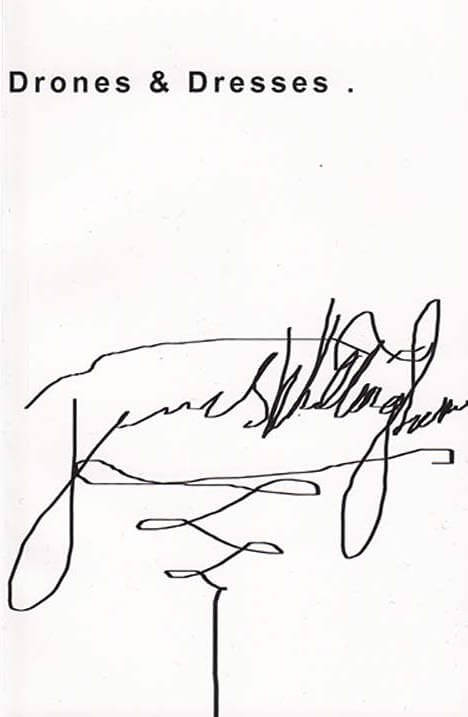
Drones and Dresses
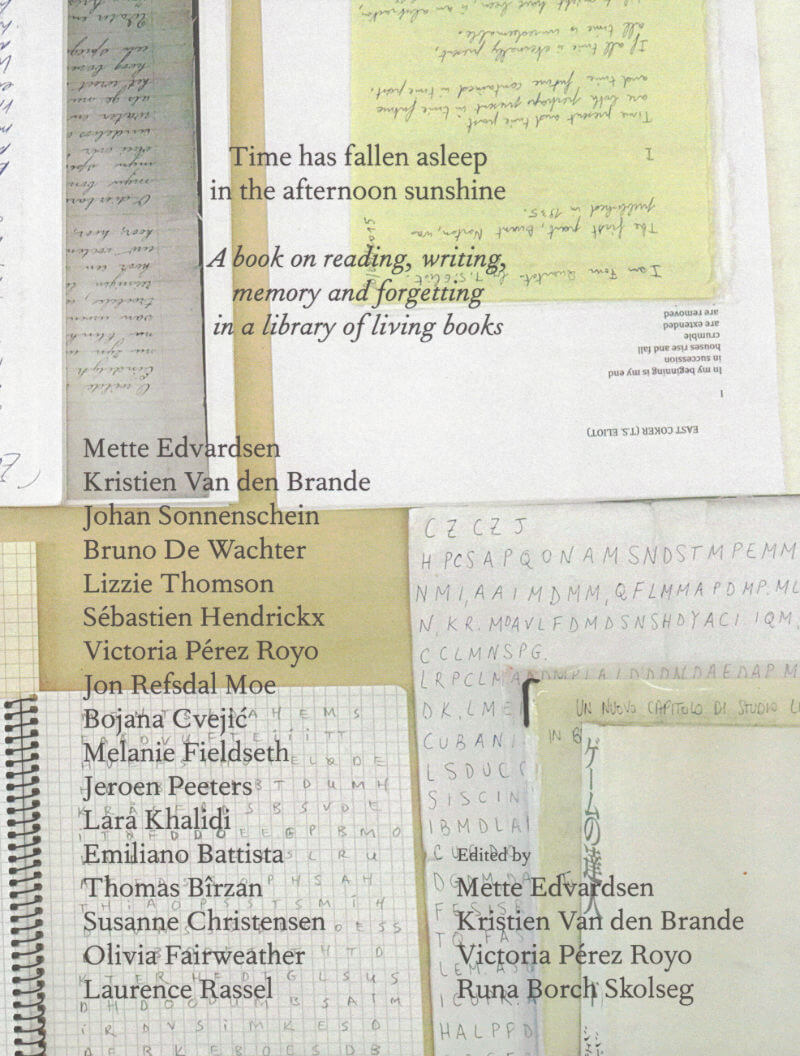
Time has fallen asleep in the afternoon sunshine
Runa Borch Skolseg, Victoria Pérez Royo and 2 more
A book on reading, writing, memory and forgetting in a library of living books.
This publication documents a project inspired by Bradbury's Fahrenheit 451, in which performers memorize a book to form a collection of living books to be read in libraries by visitors. The publication brings together eighteen text contributions from artists and theoreticians, and a visual essay.
The project Time has fallen asleep in the afternoon sunshine starts as a group of people who dedicate themselves to memorizing a book of their choice. Together they form a library collection consisting of living books. The “books” pass their time in libraries reading, memorizing, talking to each other, going for walks outside, prepared to be read by a visitor. The readings take place as intimate one-to-one encounters where the “book” recites its content to the reader. Over time the project grew into a library collection of more than eighty living books in twelve different languages across Europe and beyond. The project developed into a bookshop, a publishing house and an exhibition format, and hosted workshops, lectures and talks and, eventually, a book.
The publication brings together eighteen text contributions from artists and theoreticians with a varying degree of proximity to the project. Their reflections touch on memory and forgetting; on the practice of learning by heart and its corporeality; on reading, re-reading, reading aloud, reading for oneself and for others; on writing, re-writing and translating; on invisible and impossible literatures; on alternative temporalities and their respective economies; on archives, libraries, bodies and other sites for conservation; on the problems of authorship and originality; on immateriality and its discontents; on the equivocal borders between reality and fiction; and on the strange and unforeseeable dynamics of people and stories coming together, disseminating and unexpectedly crossing paths again. The second part of the book is a visual essay that documents the processes of memorizing, reading and re-writing.
Contributions by: Mette Edvardsen, Kristien Van Den Brande, Johan Sonnenschein, Bruno De Wachter, Lizzie Thompson, Sébastien Hendrickx, Victoria Pérez Royo, Jon Refsdal Moe, Bojana Cvejić, Melanie Fieldseth, Jeroen Peeters, Lara Khalidi, Emiliano Battista, Thomaz Bîrzan, Susanne Christensen, Olivia Fairweather and Laurence Rassel.

Le Large
This light, pocketbook format publication by After 8 Books gathers works by French artist Julie Beaufils, and three short stories commissioned for the occasion, dealing altogether with social tensions and emotional explosions.
The ink drawings by Julie Beaufils that form the core of the book, follow a logic of editing, accumulation and narrative incompleteness: the figures come from memories of films or TV series, as sediments of mass culture, or sometimes from personal observations and experiences crystallized in images. Shapes and figures develop as an ambivalent collection, informed by the weight and the vibration of lines and strokes.
This book aims at triggering the interpretation of these works, and at making their “reading” more complex, more playful too. Graphic designer Scott Ponik composed a visual story close to a manga, part abstraction, part emotion. The narrative and affective potential of the drawings is further activated by their free association with three short stories by Michael Van den Abeele, Buck Ellison, and Reba Maybury. Van den Abeele tells about the inner thoughts of a donor at the sperm bank; Buck Ellison’s story follows a few hours in the life of some girls in the San Francisco area, dealing with the cruelty and the naïvety of their relationships; while Reba Maybury proposes an erotic analysis of the connection between desire and capitalism.
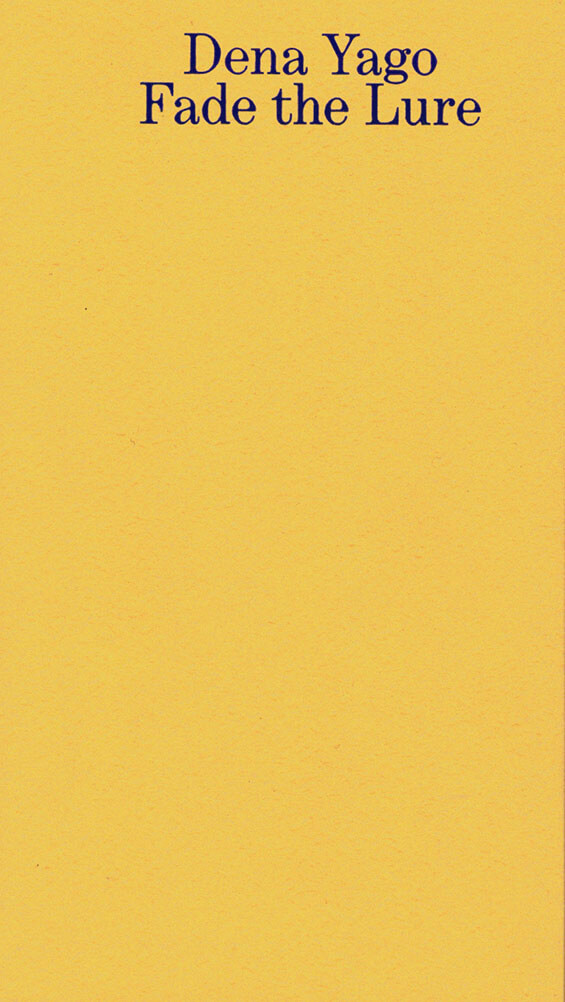
Fade the Lure
Fade the Lure is a collection of poems and photographs created between 2014 and 2017, during Dena Yago’s experience working and living alongside emotional support dogs in Los Angeles. In Yago’s words, poetry is sometimes “a form of communication created out of the desire to avoid, and an inability to engage in other forms of direct communication” with animals or humans. Fade the Lure explores the possibility for the poem to account for relationships that materialize and live beyond words, while being embedded in a consumerist society’s confined structures.
Dena Yago (born 1988, lives & works in NYC) is an artist, a writer and a poet. She was one of the founding members of K-HOLE, a trend forecasting group active from 2010 to 2016. Recent publications include Ambergris (Bodega) and Esprit Reprise (Pork Salad Press). Her work has been exhibited worldwide, including at the Museum of Modern Art in Warsaw and at Bodega in New York.

NIGHTNIGHT
In collaboration with Laurent Poleo-Garnier, NIGHTNIGHT is an archive of images and texts from different sources addressing the theme of the night. Over the book as a party that degenerates with fatigue, alcohol and other stimulants, images and layout deteriorate, the subjects get tired, the vision is cloudy...

Nails
Nails is an archive of images of hundreds of manicure tutorials on youtube. "I wanted to bring out the strangeness that emerges from these claws metallized, both prosthetic and disabling, both objects of desire and disgust. Throughout the book, we find ourselves lost in piles of flesh, varnish that establish the uncomfortable as much by the sexual character that emerges as the misunderstanding of the image."

NXS #4 Algorithmic Anxiety
NXS #4 Algorithmic Anxiety explores the spectrum of algorithmic authority over our lives (whether perceived or not). The contributors question or reveal the inconspicuous influence of algorithms, in their various forms, on our behavioral patterns, emotions, and self perceptions of our position in the world.

NXS #3 Viral Bodies
NXS issue #3 Viral Bodies investigates the changing concepts of gender and identity norms in the digital space, and open the discussion to many possible speculations and to their real world implications.
Kicking off the issue with a starting piece by Reba Maybury, over 20 fellow contributors explore social conventions, share intimate moments and experiences of pain, love, hate and fear. They delve into authenticity in the non-human sphere, they code accidental bigotry on the internet. Science fiction writer Alan Dean Foster blurs the lines of reality, transmitting what is real and what not in a dystopian society. Political art critic Penny Rafferty unravels the minds of tech giants while artistic researcher Addie Wagenknecht questions the diffusing lines between virtual technology and working bodies in reality.
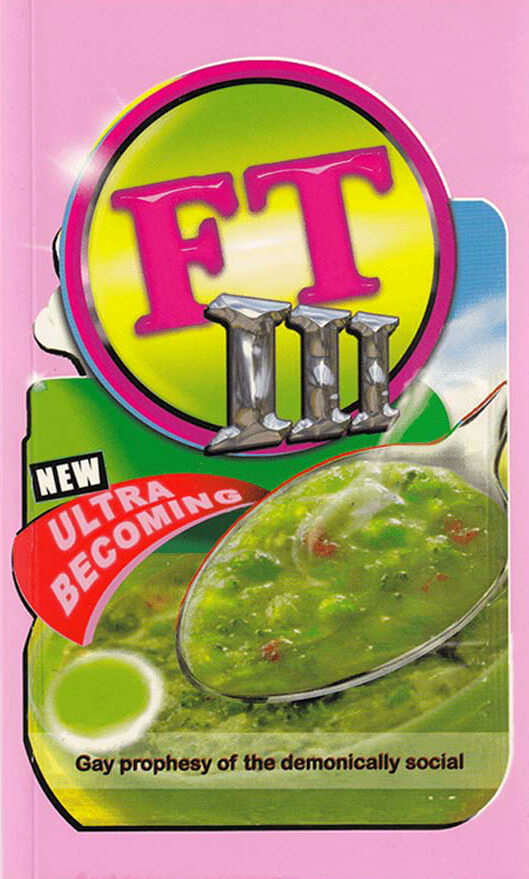
Frozen Tears III
Texts By: Kristen Alvanson, Stuart Bailey, Stephen Barber, Mark & Steve Beasley, Karla Black, Marianna Botey, Jesse Bransford & Casey Mckinney, Charles Bronson, Paul Buck, David Burrows & Simon O'sullivan, Bonnie Camplin, Lisa Castagner, Ccru/Orphan Drift, Dennis Cooper, Michael Corris, Esther Planas, Karen Cunningham, Kim Coleman & Jenny Hogarth, Michael Cross/ M Satai, John Cussans, Enrico David, Anthony Davies, Lorenzo De Los Angeles Iii, Madeline Djerjian, Peter Donaldson, Ross Downes, Electric Six, Patricia Ellis, John Espinosa, Dick Evans, Keith Farquhar, Dan Fox, Luca Frei, Barnaby Furnas & Ivette Zieghelboim, Tony Garifalakis, Babak Ghazi, Ilana Halperin, Mark Harris, Iain Hetherington, Damien Hirst, Klara Hobza, Stewart Home, Rachel Howe, Mark Hulson, Andy Hunt, Andrew Hughes, Gareth Jones, Kevin Killian, Kool Keith, Steve Klee, The Knockouts, Pete Lewis, Cedar Lewisohn, Fiona Lumbers, Patricia Macormack, Andrea Mason, Natt Mellors, Anna Mitchell, N.R.K Mohammad/ Sos Newsrod/ Dan Thurwen, Gean Moreno, Hv Morton, Donal Mosher, Neil Mulholland, Patrick Mullins, Yuki Muruyama, Reza Negarestani, No Bra, Paul Noble, Bernard Noel, David Osbaldeston/Joe Devlin, Arthur Ou, Mike Pare, Chloe Piene, Esther Planas, Elizabeth Price, Adam Putnam, Harry Pye, Hillary Raphael, The Rebel, Steve Rushton/Hubert Czerepok, Amelia Saul/Jo-Ey Tang, Kenji Siratori, Craig Slee, Alison Smith, Emma Stark, John Strutton, Francis Summers, Rebecca Taylor, Simon Thompson, Mark Tichner, Ian Titus, Dan Torop, Jeffrey Vallance, Harlan D Wilson, Benny Zadik.

Frozen Tears II
Texts By: Kathy Acker, Mireille Andrès, Antonin Artaud, Dominique Auch, Ned Baldwin, Stephen Barber, Georges Bataille, Baudelaire, John Beagles, Mark Beasley, Dodie Bellamy, Alissa Bennett, Simon Bill, Jesse Bransford, R.A.Bransford Jr Esq, Paul Buck, Bonnie Camplin, Aline Bouvy/John Gillis, Dennis Cooper, John Cussans, Trinie Dalton, Sue De Beer, Brock Enright, Felix Ensslin, Dan Fox, Robert Garnett, Paul Green, Matthew Greene, Fernando Guerreiro, Pierre Guyotat, Ilana Halperin, Glen Helfand, Jacques Henric, Rachel Howe, Ben Kaleb Brantley, Seth Kelly, Kevin Killian, Christopher Knowles, Jennifer Krasinski, Cedar Lewisohn, Lorenzo De Los Angeles Iii, Rachel Lowther, Dave Martin, Karl Marx, Casey Mckinney, Gean Moreno, J.P. Munro, Paulina Olowska, Simon O¹Sullivan, Arthur Ou, Damon Packard, Mike Paré, Graham Parker, Wotjek Puslowski, Adam Putnam, Ian Rafael Titus, Eugène Savitzkaya, Eric Schnell, Amy Sillman, Allison Smith, Joanne Tatham/ Tom O'sullivan, Daniel Torop, Genya Turovsky, Banks Violette, Benjamin Weissman, Ivan Witenstein, Thom Wolf

Frozen Tears I
Texts By: Art & Language, Fabienne Audéoud, Dave Beech, David Burrows, Ccru, Jake Chapman, John Cussans, Johnny Golding, Inventory, Martin Mcgeown, Lucy Mckenzie, Esther Planas, Graham Ramsay, John Russell, Clara Ursitti, Andrew Williamson.

Doggo
“After all we all want to be fucked by Bruce Willis. Baby-penis, Man-Father, penis-stool, envelope-sheath. The Fantasy is available to us all in a spectacle of scale. There is no false consciousness.”
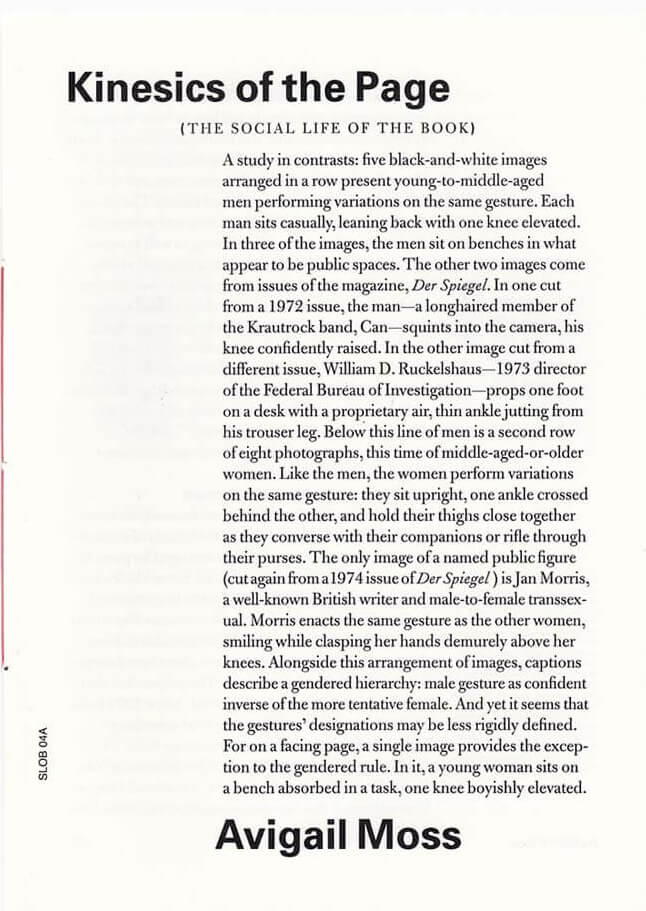
Kinesics Of The Page
This installment written by LA-based artist and writer Avigail Moss, develops as a thorough analysis of one particular book: Marianne Wex’s outstanding photo-essay Let’s Take Back Our Space: “Female” and “Male” Body Language as a Result of Patriarchal Structures, from 1979. Moss proposes a contextual approach of the book, in relation to politics and feminism in post-war West Germany, as well as a minute study of its design and page structure, revealing the complexity and force of the volume.
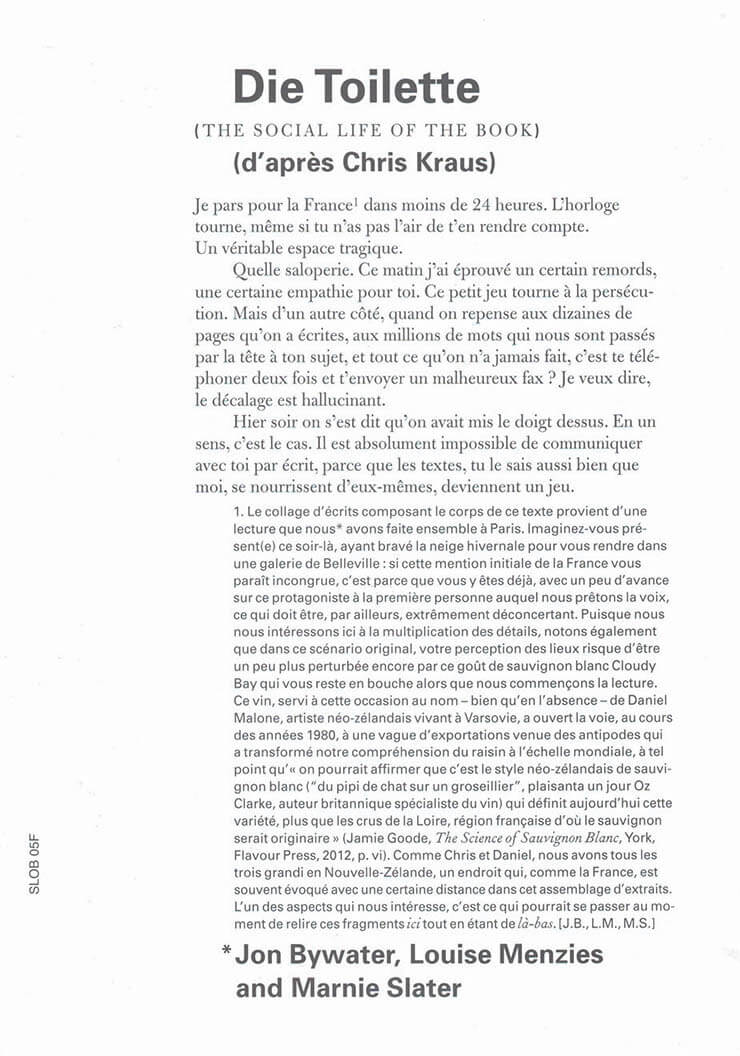
Die Toilette
Marnie Slater, Louise Menzies and 1 more
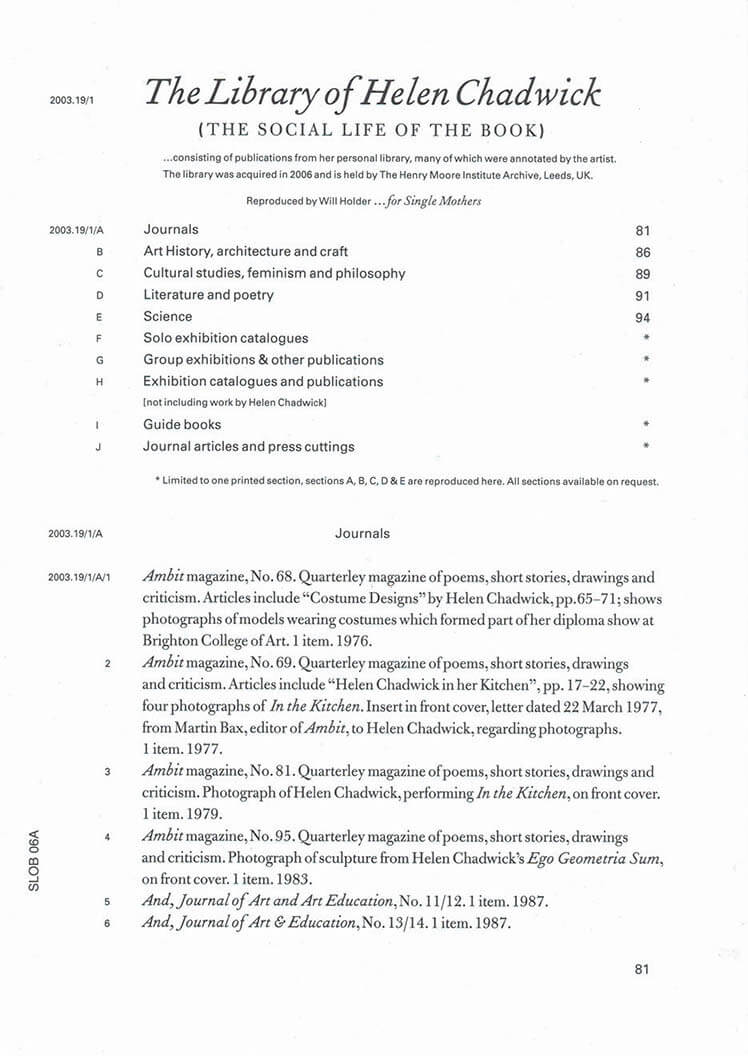
The Library of Helen Chadwick
The 6th installment of The Social Life of the Book series is a section of the catalogue of publications from English conceptual artist Helen Chadwick’s personal library, reproduced by Will Holder for single mothers. The library was acquired in 2006 and is held by the Henry Moore Institute archive, Leeds, UK.
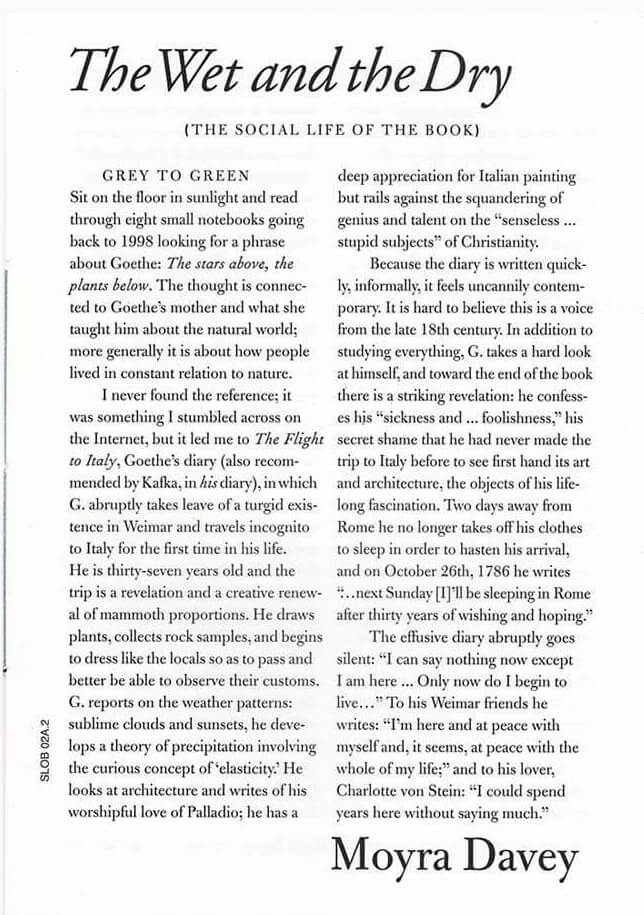
The Wet and The Dry
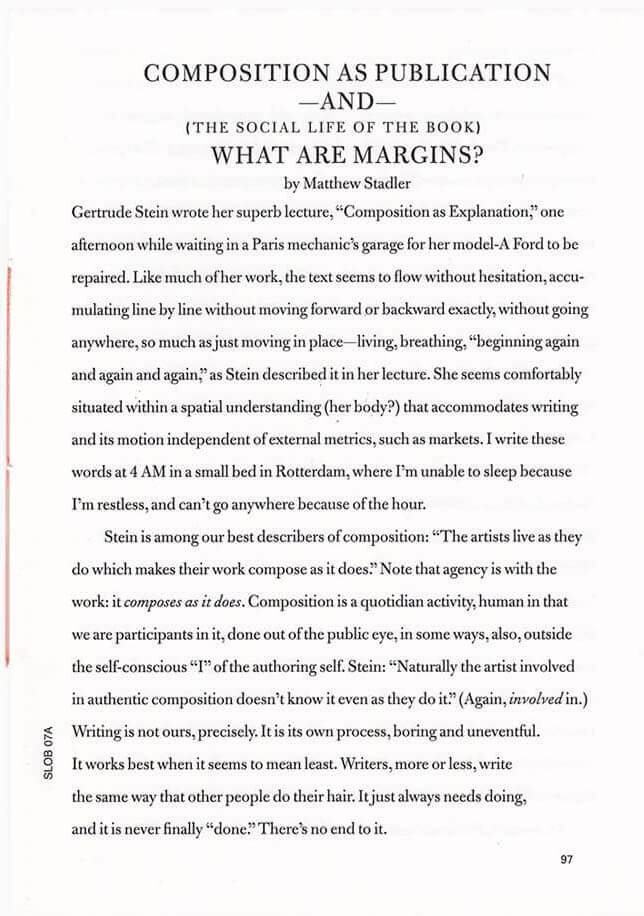
Composition As Publication – And – What Are Margins
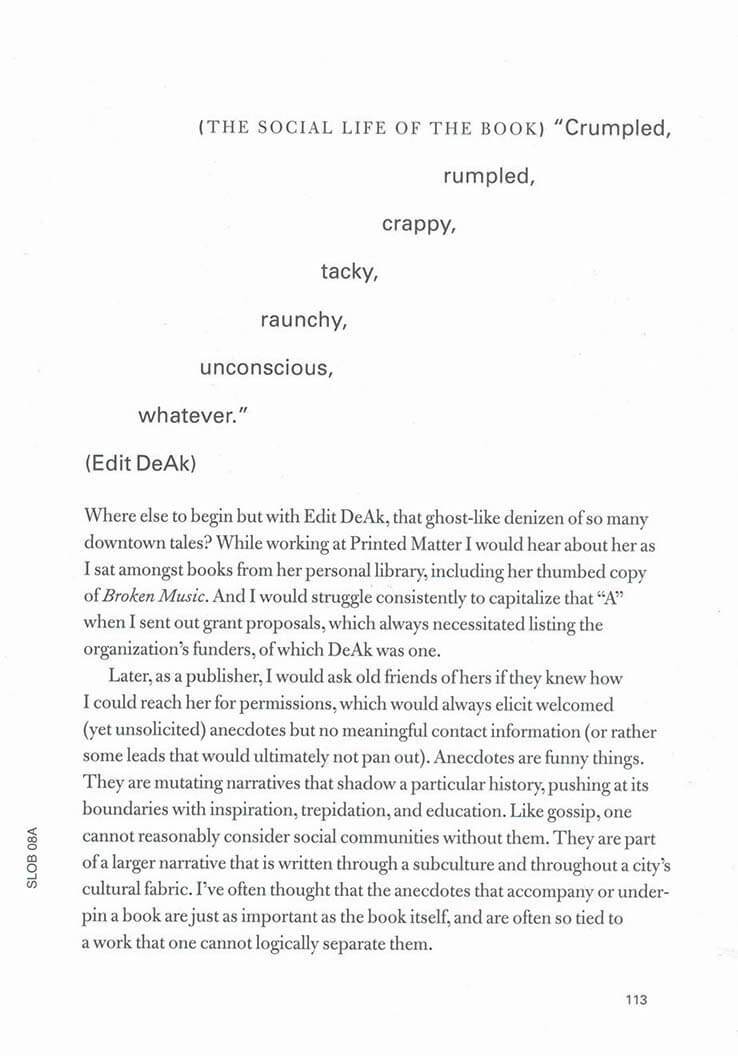
CRUMPLED, RUMPLED, CRAPPY, TACKY, RAUNCHY, UNCONSCIOUS, WHATEVER
An artist, a musician, and a publisher based in Brooklyn, NY, James Hoff tells here how books got him into art. He considers the complex and stimulating fabric of anecdotes, gossip, secrets, that are shared around artists’ publications, and, further, the role of printed matter in the building of an artist’s community. The essay pays homage to Edit DeAk through its title, and also comprises some pictures of book covers and LP sleeves from Hoff’s collection.
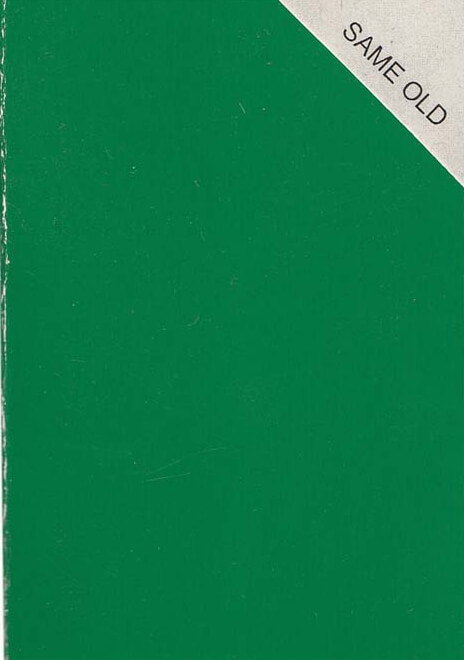
Same Old (new book)
Same old (new book), featuring some cut up drawings because sometimes you just gotta. ~6x9cm ~400p , Glued by hand with shiny cover.
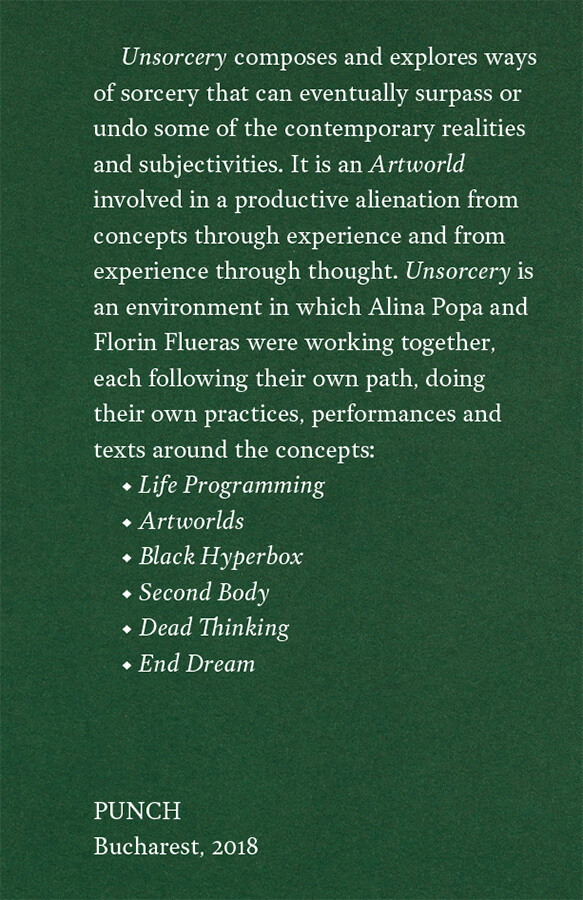
Unsorcery
Unsorcery composes and explores ways of sorcery that can eventually surpass or undo some of the contemporary realities and subjectivities. It is an Artworld involved in a productive alienation from concepts through experience and from experience through thought. Unsorcery is an environment in which Alina Popa and Florin Flueras were working together, each following their own path, doing their own practices, texts and performances around the concepts: Life Programing, Artworlds, Black Hyperbox, Second Body, Dead Thinking, End Dream.
